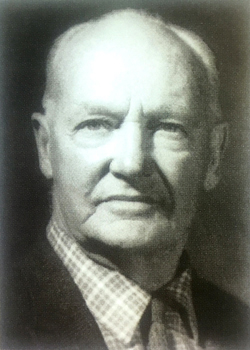
Council of Heads of Australasian Herbaria
Australian National Herbarium
Biographical Notes
 |
Council of Heads of Australasian Herbaria |
 Stones, Ellis (1895-1975)
Stones, Ellis (1895-1975) Ellis Stones was Australia's first popular landscape architect, the father of an Australian landscape style. Inspired by the bush, he sought to bring nature to the cities.
Trained as a builder, Stones was injured at Gallipoli in 1914. After a long period of major operations, acute pain, headaches and depression, Stones resumed building work, in defiance of medical opinion. He married in 1922 and had three daughters. In 1935, a chance meeting with Edna Walling resulted in Stones changing career, first concentrating on garden construction then gradually undertaking design work. Stones constructed many of the rock outcrops, walls and ponds in Walling's gardens. In Australian Home Beautiful of December 1938 Walling wrote:
'It is a rare thing this gift for placing stones and strange that a man possessing it should bear the name Stones... Lovely as formal gardens can be, it is these informal schemes, in which boulders form so important a part, that appeal so tremendously... they give us the atmosphere of the country, and the refreshment of mind derived from such' (Latreuille, 1990 p35).
After World War II, Stones did significantly more. design work. While much of his work in the 60s was in City Gardens, he designed some country gardens and factory landscapes, often relegating cars to the rear of the building because he regarded them as a blot on the landscape. He also did voluntary landscape design work, for example at Burnley Horticultural College. In about 1950 he started a small nursery and most orders included a couple of native plants. As he grew older, Stones increasingly suffered from ill-health but he kept on working, bouncing back with incredible energy after any illness. He died in 1975 after a full day's work at Salt Creek.
Source: Shirley Pipitone, SGAP Newsletter, Canberra Region,
Vol.12, No.10.
Portrait Photo: Bev Hansen, in Adler, M. (2024) 'Burnley Gardens - Their Design and the People who loved them.' Lothian, Melbourne.